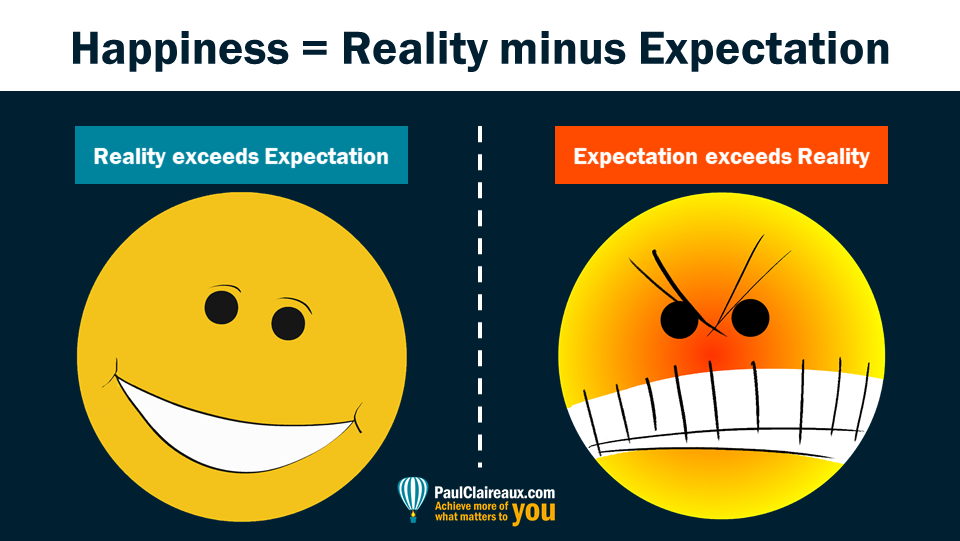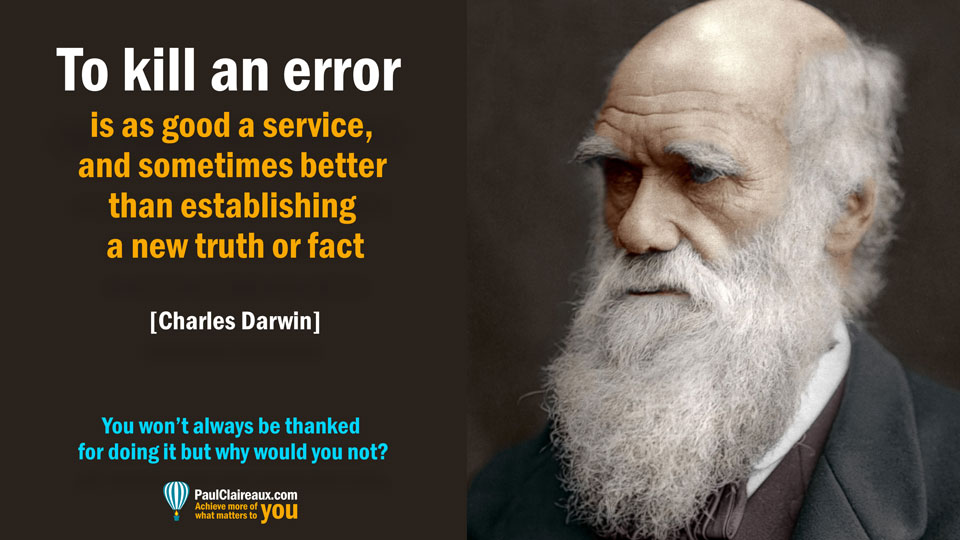Why there’s no F in change
and why we need a bit of discomfort to achieve it.

If you want to make a change in your life, to achieve more for yourself or your loved ones, this is the best way to start that journey.
This Insight is one of many you’ll find on this site that explores solid (evidence-based) ideas to help you with personal change.
If you like this one, you’ll probably also enjoy reading these:
- ‘Three words to change your life’
- ‘Seven ways to achieve more without working harder’ and
- ‘Twenty ideas to help your teenagers achieve more’
That said, please stay here for now as this Insight is shorter than the others, and the best place to start. 🙂
[clickToTweet tweet=”Why there’s no ‘F’ in change” quote=”Why there’s no F in change”]
Let’s start with a funny – from Mel Robbins
Mel Robbins is a famous American TV host and motivational speaker.
She’s smart, has a law degree and a funny way of explaining how we sabotage ourselves when it comes to making big changes in our lives.
I realise that her hard-hitting approach is not everyone’s ‘cup of tea’… but I like it and so, it seems, do a great many others.
Mel’s TED talk ‘How to stop screwing yourself over’ is massively popular with more than 21 million views. It’s also very entertaining, take a look.
Our big problem, says Mel, is our use of a four-letter word beginning with ‘F’
No, not that ‘F’ word!
The word she’s talking about is ‘fine’ and she’s absolutely right.
We all do it, don’t we?
We all say ‘fine’ all the time when telling others how we are… even if it bears no relation to how we’re really feeling.
Why do we do that?
Well, perhaps we don’t want to trouble our loved ones with the truth when things are not going so well.
Or, on the flip side, maybe we don’t like to say that we feel amazing – even when we do – for fear of making others feel terrible by comparison.
That’s a very British thing to do by the way – we revel in our stuffiness and stiff upper lips, don’t we? 😉
However, regardless of what we tell others, we need to ‘face into’ the truth about how we’re feeling because if we don’t, we’ll miss out (big time) on life.
If we suppress our happier emotions we’re going to miss out on those natural highs.
Also, if we try to deny our ‘less than fine’ emotions (telling ourselves to have only positive thoughts, as too many ‘lightweight’ coaches suggest) we’ll feel even worse for two reasons:
- First, we’re lying to ourselves and dishonesty makes us feel bad.
- Second, we’re blocking ourselves from the motivation to do the work necessary for change.
So, we’ll get ‘stuck’, drift sideways at best – or our situation will get worse 🙁
If you boil it down, we need to find a bit of unhappiness (a bit of tension) with our current situation if we’re to be motivated for change.
It’s also true that we need to feel able (with knowledge or guidance) to take the next step towards change – and have triggers or nudges for essential actions on the way.
If it ain’t broke, don’t fix it
I guess we’ve all used this saying – for testing the ‘physical’ objects we use in our lives.
However, it’s no use for testing our personal skills and knowledge because others will run ahead of us if we stand still for long.
The simple fact is that:
if we want a lifetime of earnings,
we need to commit to a lifetime of learning
(Alan Pickering, CBE)
Or as others might say,
‘if it ain’t broke – there’s still time to fix it’ 😉
Change is the only constant, in our lives and the world around us. These things are like rivers and forever in motion.
Yes, that is insightful but I can’t take credit for it.
Like most of the best ideas, it’s a very old one!
Mind the gaps – to help drive your actions Take a look at this simple equation:
Take a look at this simple equation:
It comes from years of research by Manel Baucells and Rakesh Sarin and is explained in their book ‘Engineering Happiness: A New Approach for Building a Joyful Life’ which you can review along with some of my other favourite books here.
Interestingly, this same idea was ‘borrowed’ and developed by Mo Gawdat in his book ‘Solve for Happy’
This, quite brilliant, equation can tell us many things – and here are the two obvious conclusions:
- We don’t necessarily need to have ‘more’ (stuff, knowledge or skills) to be happier. We also have the option of lowering our expectations or letting go as a Buddhist might say.
- If we constantly raise our expectations well above our current situation, we risk being in a permanent state of unhappiness.
On the flip side, it reminds us that if we stop using the ‘F’ word, and stop pretending that everything is fine when it’s not, we can start to feel some unhappiness/discomfort.
The good news is that this discomfort, in modest doses, will help us to move towards a better place.
The North Wind made the Vikings etc.
Acknowledging that there’s a shortfall (some gaps) between what we want (or expected to have) in our lives – compared to what we have right now – will help to drive our efforts.
Let’s just be careful not to take this search for unhappiness too far.
We don’t need to be constantly striving for more in all areas of our life and we don’t want to set our immediate aims (on any particular goal) too far above our current reality.
Goals need to be ‘attainable’, amongst other things
Rome can’t be built in a day, and if we expect it to be so, we can make ourselves very unhappy.
However, if we want to achieve more and raise the bar on our reality, it’s clear that we need to get a little bit out of our comfort zone.
Engineering happiness can help in business too
As an aside, here are some more ideas, in a short video, from Manel Baucells, one of the authors of, ‘Engineering Happiness’. Here he reminds us that:
- As consumers, our ‘satiation’ is key to our happiness. In short, we don’t tend to enjoy a second Mars bar as much as the first 😉
- With experiences, our ‘anticipation’ of the future is key. There’s excitement in ‘looking forward’ to an event – as well as the event itself, right?
These are useful lessons about ‘scarcity marketing’ and ‘event timing’ if you’re in business.
How much does your happiness cost?
What’s also interesting is just how little, if anything, we need to spend to find happiness each day.
Here’s my list of activities that make me happy.
What do you have on yours?
The difference with planning your money
Sorting out our longer-term personal finances is just one of the many challenges in life where a true assessment of our current situation is the best place to start.
We need to see that ‘gap’ between our expectations and our prospective reality if we’re to motivate ourselves to change things for the future.
However, with our long term finances, this initial challenge (of making a good assessment of the shortfall) isn’t always easy.
Indeed, as you can see here, even the experts can’t agree on the cost of making up for the shortfall
The result?
Very few people have any real idea about the financial challenges they face.
These two scary examples – prove the point:
A 2015 UK survey (by Ipsos Mori) asked the following questions:
- What’s the average cost of raising a child – in Britain from birth until they reach the age of 21?
- What size of pension fund would you need – for a retirement income (including your state pension) of c. £25,000 a year?
Now, before you look below – write down your estimates of the amounts required for those situations.
Here are the answers:
On the cost of raising a child:
Over 60% of people thought it would be less than £100,000.
More than 25% thought it would cost less than £30,000!
The actual estimated cost?
Around £230,000! – including college support but not private school fees. Source: LV insurance.
On the pension question:
The answers to this one were shocking!
Over 50% of people believe that the target pension of £25,000 could be delivered with a fund of less than £150,000.
Indeed, 30% thought that a fund of £50,000 would be enough.
But 12% (more than 1 in 10 people) thought that a fund of £15,000 would do the job!
For goodness sake,
that’s less than the targeted annual income!
So, what fund would you actually need?
About £300,000.
Or more if you wanted an inflation-linked income.
And here’s the truly shocking thing
It doesn’t need to cost you the earth to build those sorts of funds – provided that you start early enough.
You can read my cappuccino savings plan idea for more on that
What matters is to get the truth about the cost of your own (personal) financial life plan, which is actually easier than you might think if you get the right guidance.
Want more ideas for achieving more
Of course, the word ‘fine’ is just one of many that we use, casually, every day that cause trouble in our lives without us even knowing it.
Simply by changing that and a few other ‘key’ words, you will give yourself a better chance of improving your life, and you don’t need to take my word for this, either.
The ideas you’ll find on this site are all carefully sourced and evidence-based.
I only ever draw ideas about personal performance from World-leading experts in Psychology, Psychiatry and Motivation.
What’s more, I expose the flawed ideas of those pop gurus who stand on a stage too!
And as Darwin once said:
So, if you’re interested in your personal performance (or that of any children or others you coach) read some of these other articles when you have time.
I think you’ll enjoy them:
- ‘Three words to change your life’
- ‘Seven ways to achieve more – without working harder
- ‘Twenty ideas to help your teenagers achieve more’
If you’d like personal coaching help to achieve more of your goals, contact me here and just tell me, in a few words, what sort of help you need.
I’ll be honest about whether I’m the best person to help you. And you don’t need to work on money management matters if you don’t want to.
You can, for example, focus on ‘earning more’ by developing your marketing and sales skills if you like.
Or, I could guide you through the process of writing your own book and other ways to raise your profile as a ‘thought leader’…
It’s your life. So, the agenda is yours to create.
Thanks for dropping in
Paul
For more ideas to achieve more in your life and make more of your money, sign up to my newsletter and, as a thank you, I’ll send you my ‘5 Steps for planning your Financial Freedom’ and the first chapter of my book, ‘Who misleads you about money?’ What’s not to like? 
Feel free to share your thoughts in the comments below
You can comment as a guest (just tick that box) or log in with your social media or DISQUS account.




Discuss this article